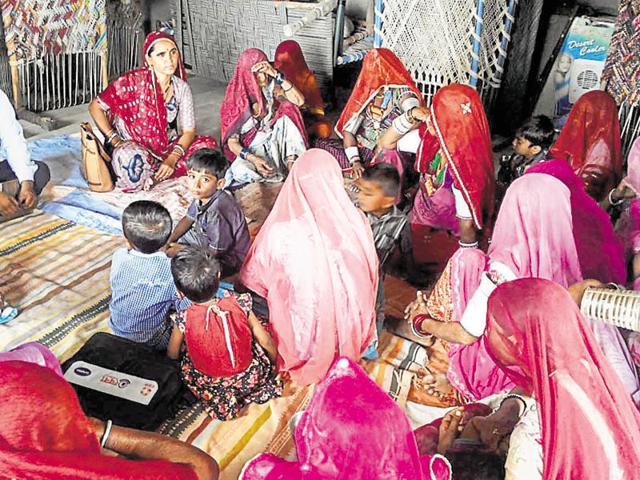Tracking system throws up encouraging data on child sex ratio
The child sex ratio in Rajasthan is gradually improving due to stringent followup and cross-check system adopted by the State Pre Conception and Pre Natal Diagnostic Technique (PCPNDT) cell, National Health Mission’s state director Naveen Jain said on Wednesday.
The child sex ratio in Rajasthan is gradually improving due to stringent followup and cross-check system adopted by the State Pre Conception and Pre Natal Diagnostic Technique (PCPNDT) cell, National Health Mission’s state director Naveen Jain said on Wednesday.

The January-February 2015 delivery data analysis shows that about 9687 pregnant women had undergone ultrasound in the state. They gave birth to 4662 boys and 4538 girls. However, there were 157 abortions. But, what is surprising is that all the abortions had sound medical reasons and not motivated by a bias against a girl child.
This was identified through medical report checks and personal interviews with the mothers, Jain, who is also the state coordinator of the PCPNDT, said,
“Now another data with January 15 as the base year is being studied. The number of pregnant women has been 13127. They gave birth to 4462 boys and 4605 girls. However, the number of abortions has been 3043. The crosscheck process is on to identify the reasons of abortions,” he said.
Jain said the PCPNDT cell data analysis of August 2014 as the base year was done on three parametres, including woman aged 18-35 years, going for ultrasound (sonography) during the first three months of pregnancy (as it is safe to get abortion done within the first three months) and whether the woman has one or more girl child.
He said tracking the women to obtain real figures and reasons behind abortions wasn’t an easy task as direct questioning on the issue wouldn’t have been encouraged by the women and their family members. Therefore, he said, the cell adopted an indirect method which involved a 13-point questionnaire about abortions. Accredited social health activists (ASHAs), auxiliary nursing midwifes (ANMs) and Anganwari workers were involved in the exercise. The data collected was then sent to a gynaecologist for analysis. The figures revealed that the reported abortions were carried out under medical advice to avoid complications.
Jain said the survey also revealed that the maximum number of abortions were carried out in five districts--- Baran, Jaisalmer, Karauli, Sawai Madhopur and Udaipur.
However, he said the entire process was time consuming but gave exact pointers. The highlight was that every woman was tracked through her mobile phone as given on the form F which was filled online at the time of ultrasound.
Many numbers were found wrong and a few remained switched off. In such cases, the cell approached them through their identity cards, which is submitted while undergoing sonography along with the form F.
“So I can confidently say that no sex determination is taking place at registered sonography centres in the state, as abortion rate is also very less,” he said.
The 2011 Census showed the child sex ratio in Rajasthan as 888 girls per 1000 boys. However, as per the health survey between January 1, 2014 and December 31, 2015, the sex ratio improved to 929 girls against 1000 boys.





